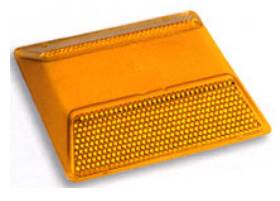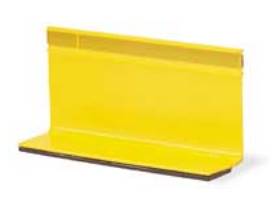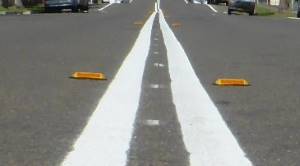How do you mark a grey stretch of tarmac so that drivers can see which way it goes both in daytime and nighttime?
Historically, roads didn’t have markings, but in the interests of safety, more and more roads now have painted lines and some form of raised pavement markers. You might know them as cat’s eyes or road studs – they’re what you see reflected back at you when you’re driving down the road at night.
Colours
The come in four colours:
White – these augment lane lines
Yellow – these augment the dividing lines (separating opposing traffic), the right-hand edge lines of one-way carriageways, the outline or traffic islands and painted medians
Red – these augment the left-hand edge lines
Blue – these mark the position of fire hydrants or access to municipal water supply and are installed by local councils.
No other colours are permitted to be used on NSW roads, though if you travel overseas to the UK or NZ then you will see green studs, too.
Advantages of road studs
The reasons for having road studs is that they provide visibility day and night, regardless of the weather, they provide audible and tactile feedback to the driver when they’re driven over and, using the different colours, they tell drivers which side of the road is left and right and indicate the direction the road is heading.
Disadvantages of road studs
They do have some disadvantages, though: they are more expensive to install and have ongoing costs. If they are not maintained they can become loose and dangerous – in one case in the UK a loose cat’s eye was flicked up by a vehicle and hit and killed prominent DJ Kemistry.
They are not able to be used on unpaved roads, and we have plenty of those.
In urban areas the noise of vehicles travelling over road studs can be annoying for local residents.
Types of pavement markers
Non-reflective raised marker (NRPMs)
The glazed surface is resistant to scratching and tyre marks and they are useful for showing vehicles lane markings during the day but not at night. These are being phased out because they create a hazard if dislodged. They’re being replaced by paint.
Retro-reflective raised pavement markers (sometimes called cat’s eyes or road studs)

These RRPMs reflect light back at you as you drive down the road. They can be reflective on one or both sides (i.e. on a motorway it’s pointless to have it reflective both sides, but for a centre line marker it’s important to have them reflective both sides.
The marker contains glass spheres or corner cubes and is housed in an acrylic or plastic shell which is durable. The base is flat and they are stuck to the road using a hot melt adhesive.
They’re used to supplement road lines (pavement markings) and they are particularly helpful when it’s wet or foggy.
There are also illuminated raised pavement markers (IRPMs) which have their own light source, but they are expensive to install and maintain and they’re only really useful in places where street lighting isn’t effective, or to make drivers aware of a particularly difficult or dangerous area.
Temporary raised pavement markers (TRPMs)
 Temporary raised pavement markers are installed when resurfacing work is done and they provide delineation of the road until road lines or pavement markings can be painted on the new surface.
Temporary raised pavement markers are installed when resurfacing work is done and they provide delineation of the road until road lines or pavement markings can be painted on the new surface.
They are made of traffic-bearing, high-impact plastic so that they don’t snap off, and you will see them in white or yellow to mark either the lane line or the dividing line, respectively. They are designed to last several weeks.
Placement of RRPMs
They are usually located in the gaps (i.e. the broken lines) or with an offset if the lines are continuous, as you can see in the image below.

When are road studs installed?
Motorways, freeways and dual carriageway roads always have road studs.
Single carriageway two-way roads should have RRPMs to supplement the dividing line if the annual average daily traffic (AADT) (see definition in Section 1.6) is in excess either 3,000 vehicles on rural roads or 6,000 vehicles on urban roads.
RRPMs should be used to supplement the edge line if the AADT is in excess of 5,000 vehicles on rural roads or 10,000 vehicles on urban roads.
On single carriageway, two-way roads, RRPMs should be provided where special conditions exist, such as:
- Average annual rainfall exceeds 1000 mm, or road is subject to frequent fogs
- Roads with sharp curves
- Hazardous locations, such as narrow bridges
- Roads with high incidence of wet-night accidents
- To maintain inter-state or inter-regional route continuity of marker application
Sometimes road studs are not used on rural roads if there are edge markers in place.
If noise will be an issue in urban areas they are sometimes omitted.
If a tunnel has sufficient lighting then they may not be required.
